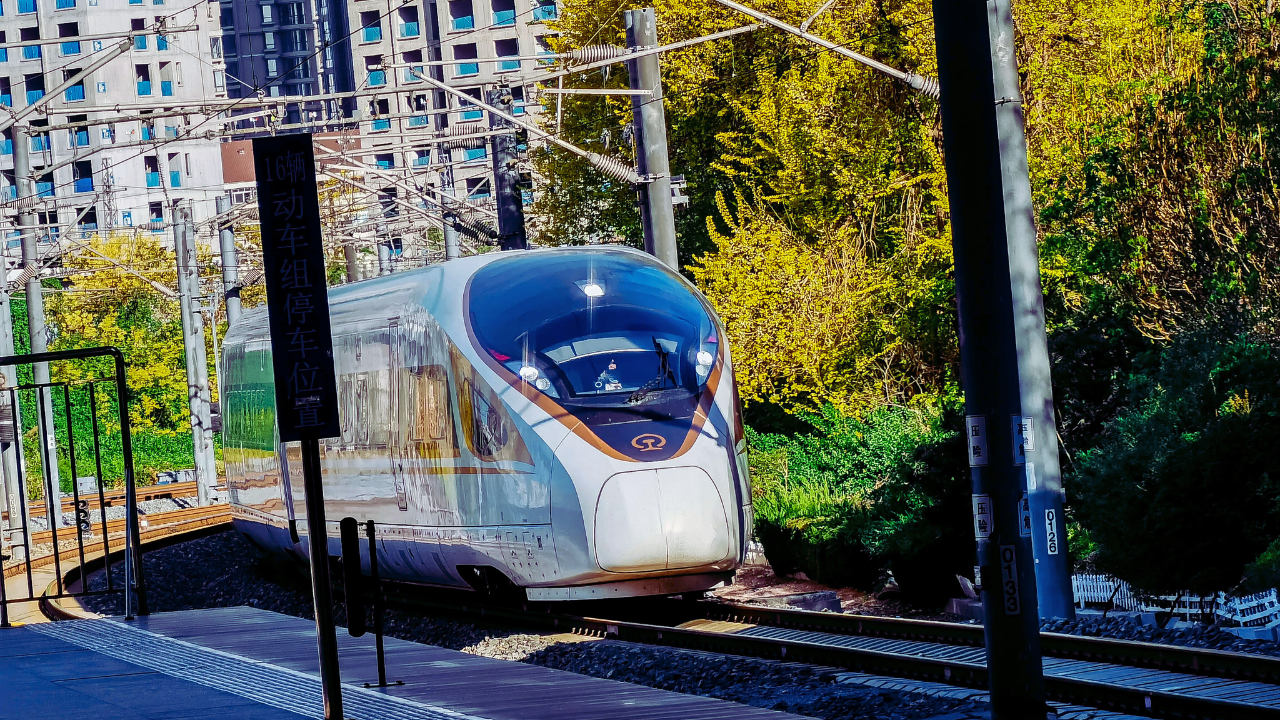The Northeastern Railway has always been an essential part of the railway network in India. As the transport lifeline for millions of passengers, its constant upgrades, new routes, and changes in operations play a crucial role in ensuring the smooth movement of goods and people in the northeastern region of the country. I will provide presents of the latest updates and developments surrounding the Northeastern Railway, keeping you informed on the newest services, infrastructural advancements, and other key news that affect passengers. The Northeastern Railway plays a pivotal role in the transportation network of India, especially in the northeastern states. Serving millions of passengers and facilitating the movement of goods, it is integral to the region’s connectivity and economic growth.
With its vast and intricate network, the Northeastern Railway faces unique challenges, including difficult terrains and extreme weather conditions. Nevertheless, ongoing efforts to enhance its infrastructure, introduce new services, and improve safety and comfort for passengers ensure that the railway continues to evolve and meet the growing demands of travel and logistics. I will provide an exploration of the latest updates and developments surrounding the Northeastern Railway, shedding light on its continuous transformation.
Overview of Northeastern Railway’s Importance
The Northeastern Railway is not just a transportation network; it is the lifeblood that connects the northeastern states of India to the rest of the country. Spanning across key regions like Assam, West Bengal, and Bihar, and extending to the more remote and difficult terrains of northeastern India, the railway network plays an indispensable role in the movement of people and goods. The region itself is characterized by its rugged landscapes, dense forests, and challenging weather conditions, all of which make the railway’s presence even more significant.The Northeastern Railway serves as a critical transport system for millions of passengers who rely on it for daily commuting, business travel, and long-distance journeys.
From the bustling cities like Guwahati to the more rural areas, the railway network ensures accessibility for individuals in both urban and remote locations. This connectivity is essential not only for the movement of passengers but also for maintaining the cultural and economic link between northeastern India and the rest of the country.In addition to passenger services, the Northeastern Railway is crucial for freight transport. The movement of goods such as coal, oil, agricultural products, and industrial supplies is essential to the region’s economy. Industries in this area depend heavily on the railway to transport raw materials, finished products, and machinery across the region and to other parts of India. The railway’s ability to efficiently move these goods contributes significantly to the economic stability of the northeastern states.
Key Developments in the Northeastern Railway
Over the past year, several updates have occurred in the Northeastern Railway network. Key projects have been undertaken to improve service, safety, and efficiency. Let’s look at some important developments:
| Development Description | Status | Expected Completion |
| New Train Routes | A few new routes have been introduced in Assam, West Bengal, and Bihar. | December 2025 |
| Upgraded Infrastructure | Stations and tracks have been upgraded to improve speed and safety. | Ongoing |
| Electrification Projects | Electrification of certain routes is underway to reduce dependence on fossil fuels. | March 2026 |
| Safety Enhancements | New signaling systems and safety measures have been implemented. | Completed in some areas |
| Expansion of Passenger Facilities | Platforms, waiting areas, and amenities are being expanded at major stations. | 2024 |
Infrastructure Developments in Detail
The development and improvement of infrastructure play a crucial role in maintaining the Northeastern Railway’s efficiency and ensuring a seamless experience for both passengers and freight services. Over the past few years, significant strides have been made in upgrading various aspects of the railway system in this region. These infrastructure developments not only cater to the increasing demand but also contribute to the overall modernization of the railway network.
Upgraded Stations and Tracks
One of the most visible and impactful changes in the Northeastern Railway network is the renovation and modernization of stations and tracks. The Indian Railways has undertaken a large-scale initiative to upgrade the stations across the region to improve passenger comfort, accessibility, and safety.The stations have seen the addition of new platforms to accommodate growing passenger numbers. These new platforms are designed to handle a higher volume of trains and ensure smoother operations. To assist passengers with navigation, modern signage and digital information boards have been installed at major stations, providing real-time updates on train schedules, platform numbers, and announcements.
This enhances the travel experience, making it easier for commuters to navigate even crowded stations.Additionally, several older stations have been upgraded to include better amenities such as air-conditioned waiting rooms, improved restrooms, food courts, and parking facilities. The aim is to make the stations more comfortable, efficient, and accessible for passengers, whether they are waiting for a train or transiting through the station.
Electrification of Routes
Another significant infrastructure development in the Northeastern Railway is the electrification of its routes. Electrification has long been a goal for the Indian Railways, as it is an environmentally friendly and efficient way to operate trains. As part of the broader electrification initiative, the Northeastern Railway has been converting many of its diesel-powered trains to electric ones.Electrification is crucial because it reduces the dependence on fossil fuels, thus contributing to a greener, more sustainable railway system. Electric trains are also more cost-effective in the long run, as they require less maintenance and fuel compared to diesel-powered trains.
By using electricity, which is increasingly sourced from renewable sources like solar and wind, the carbon footprint of the railway system is significantly reduced.Another key benefit of electrification is that it allows for higher speeds and more reliable services. Electrified trains are generally faster and more responsive than their diesel counterparts, which helps improve the overall efficiency of the railway network. The electrification of key routes in the northeastern region ensures that trains can run at their full potential, offering passengers faster, more punctual services.
New Train Services and Routes
With the region’s growing population and increasing demand for travel, the Northeastern Railway has also focused on introducing new train services and routes to cater to both passengers and freight needs. Over the past year, several new trains have been launched to meet the diverse travel needs of commuters, tourists, and businesses in the region.These new services include faster express trains, which connect major cities in the region and help reduce travel time significantly. For example, new trains have been introduced to cut down travel times between cities like Guwahati, Kolkata, and New Delhi. These trains are equipped with modern facilities to provide passengers with a more comfortable journey.
With the introduction of these faster services, the efficiency of the railway system is significantly improved, and passengers are able to reach their destinations with greater convenience.Apart from passenger trains, the Northeastern Railway has also rolled out new dedicated freight trains to improve logistics and the movement of goods across the region. These trains are designed to transport materials such as coal, food grains, construction materials, and industrial goods, which are essential for the local economy. The introduction of these freight trains ensures that businesses can rely on a steady and efficient transport system to move their goods.
Passenger Services and Comfort Upgrades
In addition to upgrading infrastructure, the Northeastern Railway has been focusing on improving passenger services. Various stations in the region have witnessed the introduction of modern waiting areas, food stalls, and better sanitation facilities.
| Station Name | New Features Implemented | Status |
| Guwahati Junction | Modernized platforms, Wi-Fi, Food Courts | Completed |
| Maligaon Station | Enhanced waiting rooms, Accessibility Ramps | Ongoing |
| Silchar Junction | Upgraded parking area, Digital Ticketing | Planned |
Environmental Impact of Northeastern Railway Projects
With a focus on sustainability, the Northeastern Railway is taking steps to reduce its carbon footprint. Electrification projects are a key part of this strategy, as electric trains are far more eco-friendly than their diesel counterparts.Moreover, the railway is working on minimizing its environmental impact by adopting greener practices such as waste management systems, rainwater harvesting, and energy-efficient station designs.The Northeastern Railway has made significant strides in reducing its environmental footprint while simultaneously improving its operational efficiency.
As part of a broader strategy to promote sustainability and reduce greenhouse gas emissions, the railway is focusing on various initiatives aimed at making its operations more eco-friendly. From electrification projects to waste management and energy-efficient station designs, the environmental impact of these efforts is substantial, benefiting both the ecosystem and local communities.
Challenges Faced by the Northeastern Railway
Despite the progress made in the development and expansion of the Northeastern Railway, numerous challenges continue to affect its smooth operation. One of the most significant obstacles is the region’s difficult terrain. The northeastern states of India are characterized by steep hills, dense forests, and a network of rivers, all of which make constructing and maintaining railway infrastructure a formidable task. The hilly landscape presents difficulties in laying down tracks and building bridges, making projects not only time-consuming but also expensive.
Extreme Weather Conditions
The region is also prone to extreme weather events, such as heavy rainfall, flooding, and landslides, which significantly affect the reliability of railway services. During the monsoon season, floods and landslides are common, often leading to track washouts or disruptions. These weather-related issues cause frequent delays, and in some cases, entire sections of the railway network may be temporarily closed for repairs. The tracks are especially vulnerable in areas with steep inclines or along riverbanks, where the risk of erosion and flooding is higher. Keeping the network operational during these periods requires constant monitoring and swift action, which can strain resources and manpower.
Infrastructure and Maintenance Challenges
In addition to the natural challenges posed by the terrain and weather, the Northeastern Railway also faces infrastructure-related difficulties. Many older sections of the railway network, built decades ago, are in need of significant upgrades and maintenance. The expansion of rail services and the increasing number of trains running on these tracks put additional pressure on the existing infrastructure, resulting in congestion and delays.
Additionally, while efforts have been made to electrify routes, some areas of the network still rely on diesel-powered engines, which require constant maintenance and are less energy-efficient. Replacing older diesel engines with electric ones and upgrading the stations and tracks remains an ongoing challenge. Moreover, resource allocation plays a key role in overcoming these hurdles. While the government has committed to infrastructure development, there is a need for more focused attention and investment in certain areas of the region, where connectivity remains limited or outdated.
Future Prospects for the Northeastern Railway
Despite the challenges, the Northeastern Railway has a promising future with several ambitious plans set to improve its infrastructure, services, and connectivity. The government and Indian Railways are committed to expanding and modernizing the network to meet the increasing demand for travel in the region.
Sustainability and Green Initiatives
As part of its long-term vision, the Northeastern Railway is also focusing on sustainability. The continued electrification of routes and the promotion of renewable energy sources for powering trains are major aspects of this initiative. The railway aims to reduce its carbon footprint, contributing to national environmental goals while also offering more efficient and eco-friendly services to passengers.
The introduction of eco-friendly practices, such as rainwater harvesting, waste management, and solar-powered stations, will continue to play a key role in shaping the future of the railway network. By adopting green technologies, the Northeastern Railway will help reduce environmental degradation and provide a cleaner, more sustainable form of transport for the region.
Upgraded Stations and Increased Frequency of Services
Another important aspect of the future plans is the continued upgrading of railway stations across the region. The goal is to create state-of-the-art stations with modern amenities such as Wi-Fi, better waiting areas, shopping facilities, and improved accessibility for differently-abled passengers. These stations will serve as transportation hubs, contributing to the economic and social development of the region by providing convenient access to various services.
In addition, there is a push to increase the frequency of train services, particularly on popular routes. With more trains running, passengers will have more options for travel, reducing overcrowding and offering greater convenience. The railway is also planning to enhance passenger experience by introducing more comfortable and modern trains, equipped with advanced features like air conditioning, better seating, and onboard entertainment.
Enhanced Connectivity to Remote Areas
The future of the Northeastern Railway also holds better connectivity for remote and less-accessible areas. There are plans to extend existing rail lines and build new ones to link isolated towns and villages to the broader network. This will not only improve the accessibility of these regions but also boost the local economy by facilitating the easier movement of goods and people. A more extensive railway network will make it easier for businesses to thrive, for tourists to visit, and for communities to stay connected.
Wrapping up
The Northeastern Railway is undergoing significant transformations aimed at improving efficiency, safety, and passenger experience. With new routes, electrification projects, upgraded stations, and improved services, the railway continues to cater to the region’s needs while embracing sustainability. While challenges remain, the ongoing developments point toward a brighter and more connected future for the northeastern part of India. As the railway continues to grow, it promises to provide even more seamless travel for passengers and support the region’s economic development.The Northeastern Railway is making impressive strides in enhancing its infrastructure, services, and sustainability efforts.
With the introduction of modern trains, electrified routes, and upgraded stations, it is well on its way to meeting the growing demands of passengers and businesses in the region. While challenges like difficult terrain and extreme weather persist, the railway’s forward-thinking initiatives and commitment to progress ensure a more reliable and efficient network. As the railway continues its transformation, it will not only improve connectivity across the northeastern states but also contribute to the region’s economic growth and development. The future looks promising, with increased accessibility and a greener, more sustainable transport system.
FAQs
What are the primary developments in the Northeastern Railway network?
The primary developments within the Northeastern Railway network focus on significant upgrades to both infrastructure and services. This includes the construction of new railway tracks, the electrification of existing routes, and the renovation of stations to offer better facilities to passengers. These developments aim to enhance operational efficiency, reduce travel times, and improve the overall experience for commuters. Additionally, increased investment in modern technologies and passenger amenities ensures the railway network meets future transportation demands.
How will the electrification of routes benefit the Northeastern Railway?
Electrification of routes provides multiple benefits to the Northeastern Railway, particularly in improving efficiency and reducing environmental impact. By transitioning from diesel to electric engines, the railway reduces fuel consumption and the overall carbon footprint. Electric trains offer higher reliability, lower maintenance costs, and faster service, which helps in accommodating the growing demand for travel in the region. Furthermore, as the electricity grid becomes greener, the railway will operate with even lower emissions, aligning with sustainability goals.
What are some of the new services introduced by the Northeastern Railway?
The Northeastern Railway has introduced several new services to meet the increasing demand for efficient transportation. New express trains have been launched to shorten travel times between major cities, offering passengers quicker, more comfortable journeys. Additionally, dedicated freight trains have been established to transport goods more efficiently, particularly for industries such as coal and agriculture. The railway has also worked on improving passenger amenities such as upgraded seating, enhanced onboard services, and better station facilities to enhance the overall travel experience.
What challenges does the Northeastern Railway face?
The Northeastern Railway faces a variety of challenges, mainly stemming from the region’s rugged terrain and unpredictable weather conditions. The hilly landscape often complicates the construction and maintenance of railway tracks, requiring advanced engineering solutions. Furthermore, the region experiences frequent monsoons, landslides, and flooding, which can disrupt services and delay projects. Resource allocation remains another issue, as there is often a need for substantial investment in infrastructure and modernization to ensure reliable and efficient services across the region.
What are the future plans for the Northeastern Railway?
The Northeastern Railway has ambitious future plans aimed at enhancing connectivity and service quality across the region. One of the key focuses is the introduction of high-speed trains, which will significantly reduce travel times and make the region more accessible. The railway also plans to further electrify routes, expand network coverage to remote areas, and introduce more modern, comfortable trains. Additionally, upgrades to station infrastructure will make travel more convenient and sustainable, further supporting the region’s economic growth.
How is the Northeastern Railway addressing environmental sustainability?
The Northeastern Railway is committed to reducing its environmental footprint through several initiatives aimed at sustainability. The electrification of routes is a key strategy, as electric trains are more energy-efficient and environmentally friendly than diesel engines. The railway is also focusing on implementing solar energy solutions at stations and using energy-efficient technologies to minimize consumption. Waste management and rainwater harvesting systems are being introduced to help preserve local resources, and ongoing efforts are being made to ensure that the railway operates in harmony with the environment.
How will the upgrade of stations benefit passengers in the Northeastern Railway?
The upgrade of stations across the Northeastern Railway is designed to enhance passenger comfort, convenience, and safety. Modernized stations will feature better seating areas, Wi-Fi services, and improved accessibility for differently-abled passengers. The addition of clean and hygienic restrooms, waiting lounges, and food courts will ensure passengers have a pleasant experience while waiting for their trains. Furthermore, these upgrades will streamline station operations, reducing congestion, enhancing security measures, and improving overall service efficiency, making travel smoother for passengers.










